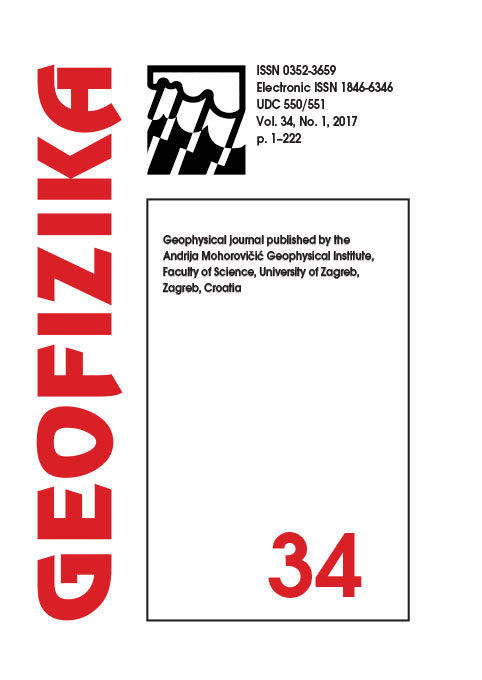Trend analysis of mean and high flows in response to climate warming - Evidence from karstic catchments in Croatia
DOI:
https://doi.org/10.15233/gfz.2017.34.11Keywords:
Mann-Kendall, precipitation, river flows, trend evolution, trend persistenceAbstract
Persistence and evolution of trends of mean and high river flows from six hydrological stations on watercourses of the Kupa River (Kupari, Kamanje), tributary Čabranka (Zamost 2), Dobra River (Stative donje, Trošmarija), Mrežnica River (Mrzlo polje) and annual precipitation on three meteorological stations (Parg, Ogulin and Karlovac) were analysed. The paper focuses on seven indicators: annual mean flow, seasonal mean flows (winter and summer mean flows), instantaneous annual maximum flow, annual and seasonal precipitation. Analysed time series range from 1951 to 2013, and the fixed period ranges from 1984 to 2013. Time series of each indicator was scaled to standardized flow anomaly and was analysed using the Mann-Kendall Z test for monotonic trend, after which it is smoothed using LOESS algorithm. The analysis was conducted for each indicator for full record, e.g. 1951-2013, then 1952-2013 and so on until 1984-2013. Thus, the sample size varies from 63 to 30 years. The smoothed standardized flow anomaly is easily comparable among different hydrologic stations. The standardized flow anomaly on all analysed stations for all analysed indicators shows lower mean value than long-time average after mid-1980's, when fixed period starts. Further analysis of summer and winter seasonal mean flows revealed different deviation from long-term annual flow average. Trend evolution of certain indicators was proven using Mann-Kendall Z test, by plotting Z values for each iteration of start year (1951 to 1984).
Downloads
Published
Issue
Section
License
Copyright (c) 2021 Geofizika journal

This work is licensed under a Creative Commons Attribution-NonCommercial 4.0 International License.

